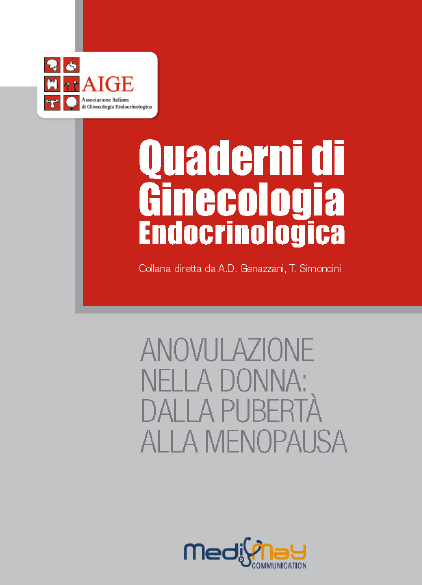-
Aitana Monllor-Tormos, Rocío Belda-Montesinos, Amparo Carrasco-Catena, Antonio Canoo
Estrogens and colorectal cancer Gynecological and Reproductive Endocrinology and Metabolism 2024; 5(1):10-14
DownloadAbstract
Background and aim: Increasing evidence from epidemiological, clinical and experimental studies suggests a relationship between estrogens and colorectal cancer (CRC). Our aim was to review the literature and provide a critical perspective of the main published data regarding this relation.
Methods: Search for evidence registered in the PubMed database. Analysis of the data and integration of the main findings to provide an update and identify the main areas for future research.
Results: Worldwide epidemiological and clinical studies support a protective effect of ovarian hormonal activity on the incidence of CRC. Both morphometric and functional histological techniques and biochemical studies, confirm a selective responsibility of the beta isoform of the intranuclear estrogen receptor (ER-β). The complexities of the mechanism of action drastically limit the knowledge related to ER-β action. Experimental models confirm the involvement of this receptor isoform in tumor progression, including multiple indicators of tumor biology, such as cell mitotic activity and others. The well-known clinical link between chronic inflammatory states and CRC has shed light on areas of research that have revealed the anti-inflammatory action of the ER-β and, still little explored, favorable changes in the microbiota. Conclusion: Current clinical and experimental data, support a protective action of ER-β on CRC. The impact on mortality is still unclear. The biochemical mechanisms are complex, although it can be stated that they directly affect the progression, and perhaps the onset of the tumor. Protection against pro-inflammatory changes and possibly dysbiosis in the intestinal flora may reduce the incidence of tumors. There is almost no experience in intervention studies that, to date, have not demonstrated efficacy. -
Mark P. Brincat, Joel Pollacco
Menopause and the effects of Hormone Replacement Therapy on skin aging: A Short Review Gynecological and Reproductive Endocrinology and Metabolism 2024; 5(1):34-37
DownloadAbstract
Background and purpose: Thinning of the skin, wrinkling and skin dryness are all changes that tend to worsen with age. These changes are all related to dysfunction of the cells making up the dermal layers such as the keratinocytes and fibroblasts. The findings of estrogen receptors on these cells suggest that estrogen deficiency, characteristic of the menopausal state, may be partly responsible for skin aging. In this paper, we aim to provide a narrative review on the associations between menopause, hormone replacement therapy (HRT) and skin aging.
Methods: A search was carried out on databases such as PubMed, Google Scholar for articles published in international peer-reviewed journals using keywords such as, “skin aging and HRT”, “skin collagen and HRT”, “skin water content and HRT”, “skin dryness and HRT”, “skin wrinkling and HRT”, “wrinkling and HRT”. Results: This search yielded a variety of both observational human and experimental animal studies. The great majority of studies showed interesting associations between improved skin physical parameters and hormone replacement, in particular estrogen use. Some studies were not consistent with such observations and yielded confusing results.
Conclusions: Withdrawal of sex steroid hormones seems to be partly responsible for aging of the skin that occurs in postmenopausal women. Unfortunately, most of the studies were limited by a small number of study participants. Larger, more robust high-quality studies are needed to further assess the relationship between HRT and skin aging changes. -
Carmen Tong
Steroid cell ovarian tumor: A case report and literature reviewEuropean Gynecology and Obstetrics. 2024; 6(1):14-16.
DownloadAbstract
Abstract
Steroid cell tumors (SCTs) are a rare subgroup of sex cord stromal tumors of the ovary. The incidence of ovarian SCT is only 0.1% of all ovarian tumors. There are three subtypes of SCTs according to cellular origin: Leydig cell tumor arising from Leydig cells in the hilus, stromal luteoma arising from ovarian stroma and SCT (not otherwise specified, NOS) when the lineage is unknown. As far as SCTs (NOS) is concerned, they constitute about 56% of all SCTs.This type of tumor can be functional and produce testosterone, leading to virilization, hyperandrogenism, and amenorrhea. The NOS subtype can also produce different steroids and in turn have widely variant clinical manifestations. Here we present a case of a 25-year-old woman who complained of sudden hirsutism, acne and dysfunctional uterine bleeding. Ultrasound showed a solid nodule in the left ovary and salpingo-oophorectomy was performed. Histology confirmed it was a SCT (NOS) of the left ovary. She has been on follow-up for 5 years with no recurrence. -
Gislaine C. Batista-Jorge,Antônio S. Barcala-Jorge,Deborah F. Lelis,Daniel E. Santos,Antônio H. Jorge,Renato S. Monteiro-Junior, Sérgio H. S. Santos
Resveratrol Effects on Metabolic Syndrome Features: A Systematic Review and Meta-AnalysisEndocrines 2024, 5, 225–243
DownloadAbstract
Resveratrol is a natural polyphenol with important anti-inflammatory and antioxidant properties for treating cardiometabolic disorders. Therefore, the present meta-analysis aimed to review and investigate the oral resveratrol supplementation effects on metabolic syndrome (MetS) components. The bibliographic search was carried out in 2023 in the following databases: PubMed, Web of Science, and Scopus. Studies that investigated the oral resveratrol effects on the MetS parameters were included. Statistical analyses were performed using RevMan Software V.5.3. The main findings showed that resveratrol significantly decreased systolic and diastolic blood pressure while having no significant effects on waist circumference and high-density lipoprotein levels. In addition, glucose level was significantly decreased in the subgroup of studies reporting change from baseline means, although the overall effect was not statistically significant (p = 0.81), while triglyceride levels were increased after the treatment period. In conclusion, the present meta-analysis evidenced the potential therapeutic effect of resveratrol on improving some MetS features, especially regarding systolic blood pressure, diastolic blood pressure, and glucose reduction; however, the results are still borderline and sometimes controversial, which might be justified by the methodological and statistical heterogeneity of the studies, with the latter varying from 17 to 57%.
-
Camille Vatier, Sophie Christin-Maitre
Epigenetic/circadian clocks and PCOSHuman Reproduction, 2024, 39(6), 1167–1175.
DownloadAbstract
Polycystic ovary syndrome (PCOS) affects 6–20% of reproductive-aged women. It is associated with increased risks of metabolic syndrome, Type 2 diabetes, cardiovascular diseases, mood disorders, endometrial cancer and non-alcoholic fatty liver disease. Although various susceptibility loci have been identified through genetic studies, they account for 10% of PCOS heritability. Therefore, the etiology of PCOS remains unclear. This review explores the role of epigenetic changes and modifications in circadian clock genes as potential contributors to PCOS pathogenesis. Epigenetic alterations, such as DNA methylation, histone modifications, and non-coding RNA changes, have been described in diseases related to PCOS, such as diabetes, cardiovascular diseases, and obesity. Furthermore, several animal models have illustrated a link between prenatal exposure to androgens or anti-Mullerian € hormone and PCOS-like phenotypes in subsequent generations, illustrating an epigenetic programming in PCOS. In humans, epigenetic changes have been reported in peripheral blood mononuclear cells (PBMC), adipose tissue, granulosa cells (GC), and liver from women with PCOS. The genome of women with PCOS is globally hypomethylated compared to healthy controls. However, specific hypomethylated or hypermethylated genes have been reported in the different tissues of these women. They are mainly involved in hormonal regulation and inflammatory pathways, as well as lipid and glucose metabolism. Additionally, sleep disorders are present in women with PCOS and disruptions in clock genes’ expression patterns have been observed in their PBMC or GCs. While epigenetic changes hold promise as diagnostic biomarkers, the current challenge lies in distinguishing whether these changes are causes or consequences of PCOS. Targeting epigenetic modifications potentially opens avenues for precision medicine in PCOS, including lifestyle interventions and drug therapies. However, data are still lacking in large cohorts of well-characterized PCOS phenotypes. In conclusion, understanding the interplay between genetics, epigenetics, and circadian rhythms may provide valuable insights for early diagnosis and therapeutic strategies in PCOS in the future.
-
S. Lee, M.V. Tejesvi, E. Hurskainen , O. Aasmets, J. Plaza-Dıaz, S. Franks, L. Morin-Papunen, J.S. Tapanainen, T.S. Ruuska, S. Altmae, E. Org , A. Salumets, R.K. Arffman, T.T. Piltonen
Gut bacteriome and mood disorders in women with PCOS Human Reproduction, 2024, 39(6), 1291–1302.
DownloadAbstract
STUDY QUESTION: How does the gut bacteriome differ based on mood disorders (MDs) in women with polycystic ovary syndrome (PCOS), and how can the gut bacteriome contribute to the associations between these two conditions? SUMMARY ANSWER: Women with PCOS who also have MDs exhibited a distinct gut bacteriome with reduced alpha diversity and a significantly lower abundance of Butyricicoccus compared to women with PCOS but without MDs. WHAT IS KNOWN ALREADY: Women with PCOS have a 4- to 5-fold higher risk of having MDs compared to women without PCOS. The gut bacteriome has been suggested to influence the pathophysiology of both PCOS and MDs.
STUDY DESIGN, SIZE, DURATION: This population-based cohort study was derived from the Northern Finland Birth Cohort 1966 (NFBC1966), which includes all women born in Northern Finland in 1966. Women with PCOS who donated a stool sample at age 46 years (n = 102) and two BMI-matched controls for each case (n ¼ 205), who also responded properly to the MD criteria scales, were included.
PARTICIPANTS/MATERIALS, SETTING, METHODS: A total of 102 women with PCOS and 205 age- and BMI-matched women without PCOS were included. Based on the validated MD criteria, the subjects were categorized into MD or no-MD groups, resulting in the following subgroups: PCOS no-MD (n = 84), PCOS MD (n = 18), control no-MD (n = 180), and control MD (n ¼ 25). Clinical characteristics were assessed at age 31 years and age 46 years, and stool samples were collected from the women at age 46 years, followed by the gut bacteriome analysis using 16 s rRNA sequencing. Alpha diversity was assessed using observed features and Shannon’s index, with a focus on genera, and beta diversity was characterized using principal components analysis (PCA) with Bray–Curtis Dissimilarity at the genus level. Associations between the gut bacteriome and PCOS-related clinical features were explored by Spearman’s correlation coefficient. A P-value for multiple testing was adjusted with the Benjamini–Hochberg false discovery rate (FDR) method.
MAIN RESULTS AND THE ROLE OF CHANCE: We observed changes in the gut bacteriome associated with MDs, irrespective of whether the women also had PCOS. Similarly, PCOS MD cases showed a lower alpha diversity (Observed feature, PCOS no-MD, median 272; PCOS MD, median 208, FDR = 0.01; Shannon, PCOS no-MD, median 5.95; PCOS MD, median 5.57, FDR = 0.01) but also a lower abundance of Butyricicoccus (log-fold changeAnalysis of Compositions of Microbiomes with Bias Correction (ANCOM-BC) = −0.90, FDRANCOM-BC = 0.04) compared to PCOS no-MD cases. In contrast, in the controls, the gut bacteriome did not differ based on MDs. Furthermore, in the PCOS group, Sutterella showed positive correlations with PCOS-related clinical parameters linked to obesity (BMI, r 2 = 0.31, FDR < 0.01; waist circumference, r 2 = 0.29, FDR = 0.02), glucose metabolism (fasting glucose, r 2 = 0.46, FDR < 0.001; fasting insulin, r 2 = 0.24, FDR = 0.05), and gut barrier integrity (zonulin, r 2 = 0.25, FDR = 0.03). -
Edward Nguyen, Michael Strug, Austin Gardner, Richard Burney, Sukhkamal Campbell, Lusine Aghajanova
Initial fertility evaluation with saline sonography vs. hysterosalpingography: it is debate-tubal Fertil Steril 2024, 121: 918-920.
Download -
Yan Zhoua, Xia Wanga, siqi Guoa, Ruiying lia, Ye lia, Ying Yua, Ting Liu
Correlation between chronic low-grade inflammation and glucose and lipidmetabolism indicators in polycystic ovary syndrome Gynecological Endocrinology 2024, Vol. 40, no. 1, 2302402.
DownloadAbstract
Objective: the purpose of this study was to explore the correlation between inflammatory indicators andblood lipids and to further provide a theoretical basis for the diagnosis and treatment of clinical polycysticovary syndrome (PcOs).Methods: Whole-blood cell counts and hormone and blood lipid levels were measured in 110 patientswith PcOs and 126 healthy women. the differences in the above levels and the correlation betweeninflammation and blood lipid levels in the two groups were determined, and classified according to BMi.Differences in inflammatory indices were also analyzed. the independent risk factors for PcOs wereanalyzed by binary logistic regression.Results: the PcOs group had greater BMi and greater body weight than the control group. the inflammatoryindicators WBc, neutrophil, lymphocyte, monocyte counts and the NlR were significantly higher than thoseof the control group. it had higher testosterone (tstO), triglyceride (tG) and total cholesterol (tc) levels.correlation analysis showed that leukocyte and neutrophil counts were positively correlated with tstO andtG levels and negatively correlated with hDl. in the BMi ≥ 24 and BMi < 24 groups, WBc was higher inPcOs patients than in healthy controls. logistic regression showed that tstO, tG and Fsh were independentrisk factors for PcOs.Conclusion: inflammatory markers are correlated with blood lipids in PcOs. During the treatment of PcOs,blood lipids and serum inflammatory factors should be monitored
-
Zhentao Gonga, lingshan Zhanga, Yingli Shi
The potential role of uric acid in women with polycystic ovary syndrome GynecoloGical endocrinoloGy2024, Vol. 40, no. 1, 2323725.
DownloadAbstract
Polycystic ovary syndrome (PcOS) is a prevalent endocrine disorder among women of reproductiveage and is associated with a variety of multi-system complications. the prevailing treatment strategyfor PcOS is to individualize the interventions based on individual symptoms and patient complaints.However, optimal efficacy in treatment necessitates a focus on addressing the underlying pathogenicmechanisms. Uric acid (UA), the end product of purine metabolism, has been suggested to be involvedin the development of several diseases, including PcOS. However, the precise mechanisms by whichUA may affect PcOS remain incompletely understood. this literature review aims to investigate thecorrelation between UA and the various clinical presentations of PcOS, such as hyperandrogenism,insulin resistance (iR), ovulation disorders, obesity, and other related manifestations, through theanalysis of epidemiological and clinical studies. the purpose of this study is to improve ourcomprehension of how UA contributes to each aspect of PcOS and their interrelationship, thusidentifying the potential role of UA as a facilitator of PcOS. Furthermore, we explore potential pathwayslinking UA and PcOS, and propose therapeutic interventions based on these findings to optimize themanagement of this condition.
-
Lea T.S. Zuchelo , Mayara S. Alves , Edmund C. Baracat , Isabel C. E. Sorpreso, José M. Soares Jr
Menstrual pattern in polycystic ovary syndrome and hypothalamic-pituitary-ovarian axis immaturity in adolescents: a systematic review and meta-analysis GynecoloGical endocrinoloGy2024, Vol. 40, no. 1, 2360077.
DownloadAbstract
Objective: to analyze differences in the menstrual pattern, age at menarche, and body mass index (BMi)in adolescents with hypothalamic-Pituitary-Ovarian (hPO) axis immaturity and Polycystic Ovary syndrome(PcOs) through a systematic review and meta-analysis.
Methods: the PubMed, eMBase, Web of science, Virtual health library, scopus databases were searchedusing combinations of descriptors. study quality was assessed using the Newcastle-Ottawa scale. For dataanalysis, the results were grouped into PcOs group and NPcOs group (hPO axis immaturity). We performed a meta-analysis of raw data and the inverse variance method, employing the standardized mean difference,of the age at menarche and BMi of adolescents.
Results: Participants totaled 1,718 from nine selected studies. the meta-analysis showed that the PcOsgroup had a higher BMi than the NPcOs group (sMD 0.334; ci95% 0.073 − 0.595; p = .012). the degree ofheterogeneity of the studies was approximately 40%. No significant difference in age at menarche (sMD− 0.027; ci95% −0.227 − 0.172; p = 0.790) and menstrual patterns was found, but amenorrhea was describedonly in adolescents with PcOs.
Conclusions: the main characteristic in menstrual pattern that differentiated PcOs patients from girls withhPO axis immaturity was amenorrhea. also, the BMi of PcOs patients was nearly one third higher than thatof adolescents with hPO axis immaturity.
Abstracts selezionati
-
Aitana Monllor-Tormos, Rocío Belda-Montesinos, Amparo Carrasco-Catena, Antonio Canoo
Estrogens and colorectal cancer Gynecological and Reproductive Endocrinology and Metabolism 2024; 5(1):10-14
Download -
Mark P. Brincat, Joel Pollacco
Menopause and the effects of Hormone Replacement Therapy on skin aging: A Short Review Gynecological and Reproductive Endocrinology and Metabolism 2024; 5(1):34-37
Download -
Carmen Tong
Steroid cell ovarian tumor: A case report and literature reviewEuropean Gynecology and Obstetrics. 2024; 6(1):14-16.
Download -
Gislaine C. Batista-Jorge,Antônio S. Barcala-Jorge,Deborah F. Lelis,Daniel E. Santos,Antônio H. Jorge,Renato S. Monteiro-Junior, Sérgio H. S. Santos
Resveratrol Effects on Metabolic Syndrome Features: A Systematic Review and Meta-AnalysisEndocrines 2024, 5, 225–243
Download -
Camille Vatier, Sophie Christin-Maitre
Epigenetic/circadian clocks and PCOSHuman Reproduction, 2024, 39(6), 1167–1175.
Download -
S. Lee, M.V. Tejesvi, E. Hurskainen , O. Aasmets, J. Plaza-Dıaz, S. Franks, L. Morin-Papunen, J.S. Tapanainen, T.S. Ruuska, S. Altmae, E. Org , A. Salumets, R.K. Arffman, T.T. Piltonen
Gut bacteriome and mood disorders in women with PCOS Human Reproduction, 2024, 39(6), 1291–1302.
Download -
Edward Nguyen, Michael Strug, Austin Gardner, Richard Burney, Sukhkamal Campbell, Lusine Aghajanova
Initial fertility evaluation with saline sonography vs. hysterosalpingography: it is debate-tubal Fertil Steril 2024, 121: 918-920.
Download -
Yan Zhoua, Xia Wanga, siqi Guoa, Ruiying lia, Ye lia, Ying Yua, Ting Liu
Correlation between chronic low-grade inflammation and glucose and lipidmetabolism indicators in polycystic ovary syndrome Gynecological Endocrinology 2024, Vol. 40, no. 1, 2302402.
Download -
Zhentao Gonga, lingshan Zhanga, Yingli Shi
The potential role of uric acid in women with polycystic ovary syndrome GynecoloGical endocrinoloGy2024, Vol. 40, no. 1, 2323725.
Download -
Lea T.S. Zuchelo , Mayara S. Alves , Edmund C. Baracat , Isabel C. E. Sorpreso, José M. Soares Jr
Menstrual pattern in polycystic ovary syndrome and hypothalamic-pituitary-ovarian axis immaturity in adolescents: a systematic review and meta-analysis GynecoloGical endocrinoloGy2024, Vol. 40, no. 1, 2360077.
Download






